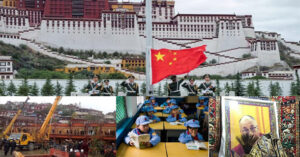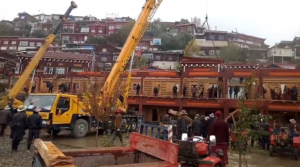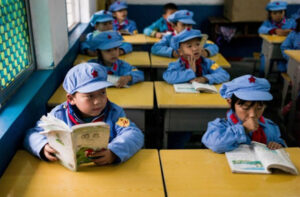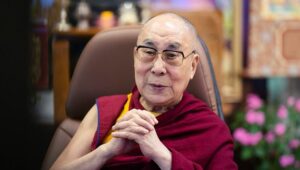 The Chinese government has ramped up their drive to demolish all traces of Tibetan culture and religion in Tibet, with the recent introduction of further strict governances targeting Tibetan institutions and monasteries.
The Chinese government has ramped up their drive to demolish all traces of Tibetan culture and religion in Tibet, with the recent introduction of further strict governances targeting Tibetan institutions and monasteries.
The International Campaign for Tibet (ICT) reports that many Tibetan-medium schools across the Tibetan traditional province of Kham [Ch: Sichuan] were closed by the end of 2020, and those remaining have been threatened with closure if they do not switch to Chinese-language instruction. The same Chinese language policy is being pushed across Amdo provice [Ch: Qinghai]. In July, Sengdruk Taktse Middle School in Darlag (Dari) County in Golog (Guoluo) Tibetan Autonomous prefecture was forced to shut. The school was known for Tibetan language teaching and its work on preserving the Tibetan language and culture.

Gaden Rabten Namgyaling School
Photo: RFA
Last month, there was an order for the demolition of Gaden Rabten Namgyaling, a school administered by Drago Monastery in Kardze prefecture, within three days and the students sent home. The school provided education in Tibetan culture and religion. 80 young monks were forcefully expelled from Dhitsa Monastery in Amdo and Jakyung Monastery.
Teaching the Tibetan language is banned outside schools and monasteries: many private and informal schools are now unable to offer Tibetan medium lessons and workshops as they have been doing to provide youngsters with a background in their culture. “No individual or organisation is allowed to hold informal classes or workshops to teach the Tibetan language during the winter holidays when the schools are closed,” a Tibetan living in Qinghai told Radio Free Asia, adding that violators of this law will face “serious legal consequences and punishment”.

Photo : Asiannews
These moves are linked with the recent launch of a campaign to get 85 percent of its citizens using Mandarin, China’s national language, by 2025. Voice of America’s report published on December 4 says that the move is likely to put threatened dialects and languages in the country under greater pressure – these include Cantonese and Hokkien, as well as the minority languages including Tibetan, Mongolian and Uyghur. “The critics have said such efforts appear to be an attempt to get rid of cultures that do not fit in with the majority Han Chinese ethnic group,” said the VOA report.
China has implemented a policy of wiping out Tibetan culture, language and religion since its invasion of Tibet in 1949. It is the face of this cultural genocide in Tibet that has prompted Tibetans in exile to set up their own government in Dharamshala and work to preserve what is being demolished in Tibet.
As a part of the sinicisation of Tibet, Han Chinese people now outnumber Tibetans in the top government posts in Tibet, reports RFA. “Four out of fifteen chief and vice-chief administrative positions in the capital Lhasa are now held by Tibetans, according to Chinese government figures,” says the report. “They are starting to use Chinese now as the official language in all the administration offices in Lhasa, and 70% of the individuals holding higher positions there don’t know how to read or write in Tibetan,” said RFA’s source,speaking on condition of anonymity and adding, “Even more concerning is the fact that 60% of Lhasa’s population are now Chinese”.

His Holiness the Dalai Lama
Tibetans in Tibet have been facing regular checks on whether they keep photos of their spiritual leader His Holiness the Dalai Lama, who China describes as a “separatist”, saying he wants to separate Tibet from the “motherland” and Beijing’s rule. A recent report by RFA said that Chinese authorities in Golog Tibetan Autonomous Prefecture were inspecting Tibetan homes for photos of His Holiness, and asking the children what they know about the exiled leader. “The authorities are making sure that no one was imparting information about His Holiness the Dalai Lama to younger Tibetans,” said RFA’s source.




 Print
Print Email
Email